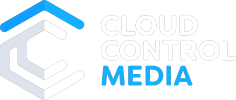Why Value Based Bidding is “Smart Bidding”
Especially for direct-to-consumer businesses, internet advertising is critical to any marketing plan. You can’t sell to your customers if you’re not where they look, search, live, breathe: online. But how do you squeeze every ounce of value out of every keyword and campaign? Value-based bidding is a good place to start. Built on machine learning, its smart bidding tactics allow you to assign value to each conversion in your sales funnel and optimize spend and actions to produce the best return on ad spend (ROAS). It’s smart bidding that produces plenty of value.
What is Value-Based Bidding?
Value-based bidding is a paid digital media strategy that connects individual bids in your campaigns to your business goals. It allows you to bid higher on the conversions that will be most valuable to your business, while conserving spend on keywords that produce poorer down-funnel results. Traditional strategies considered only the cost of a click. Lower CPCs were good; high CPCs were bad. It was a simple means to an end that may not have always produced the best results for your business.
What Are the Benefits of Value-Based Bidding?
Unlike cost-per-click, cost-per-lead, or even cost-per-acquisition bidding strategies, value-based bidding considers the bigger picture. You can home in on the products that yield you the highest profit margin and also the consumers who are likely to be return buyers.
For example, an auto dealer knows the profit margin on luxury cars beats the economy car. That’s why you’d bid higher on luxury car keywords. But you can also segment your audience and bid higher on keywords related to a particular audience. And you can consider the profit you make on vehicle financing and add related keywords to the mix. So, you bid higher on cars that are more likely to be financed since those cars are more likely to lead to a sale and you benefit from both the sale and the finance package.
Value-based bidding gives you more control of your budget and increases efficiency because you only bid on conversions that relate to your organization’s profitability. It decreases waste and improves your ROAS. And because value-based bidding is built on machine learning, it learns with time, leading to better targeting and increased visibility in front of your most valuable customers.
How to Get the Most Out of Value-Based Bidding
While Google makes value-based bidding relatively easy to set up, you won’t get the most out of it if you don’t fully share your data. Like any technology built with artificial intelligence, the more data the system has, the better the results. To get started with value-based bidding:
- Assign Accurate Values to Each Conversion
- Assigning accurate conversion values is the critical first step in value-based bidding and it requires a full understanding of your customer’s journey. Google uses your data to train its AI systems to determine where your most valuable customers are. Pull historical data, industry benchmarks, and anecdotal feedback from real customers. Once values are assigned, be consistent so you can track the performance of your campaigns over time. You also want to consider the lifetime value of the consumer. From the auto dealership example, consider how often your customer will buy a new car and how many family members and friends they might bring into the fold.
- Set a Realistic ROAS Goal
- Look at historical data and current trends to determine the profit margin you want from your ROAS. Google uses the ROAS goal you set to optimize your bids, show ads to customers most likely to convert, and bid higher for those people. As with conversion information, the more accurate your ROAS goals, the better results Google can help you achieve. Organizations that switch from targeting cost-per-acquisition to ROAS can see a 14% increase in conversion value at a similar spend. Your budget also plays a key role here; lower budgets may produce a lower ROAS.
- Review Values and Goals Regularly
- To get the most out of any paid digital marketing, you need to track what’s happening and be willing to adjust as needed. As your business evolves or the economic winds fluctuate, you need to confirm that your values are still accurate and that you are getting the most out of your Google Ads campaigns.
Are you using value-based bidding yet? The CloudControlMedia Platform (CCMP) has been doing this for years. Its AI core helps us align your goals with actions we take on your behalf to produce better down-funnel results—and not just on Google. CCMP works across multiple channels and even ties directly to your CRM. Learn more today.















